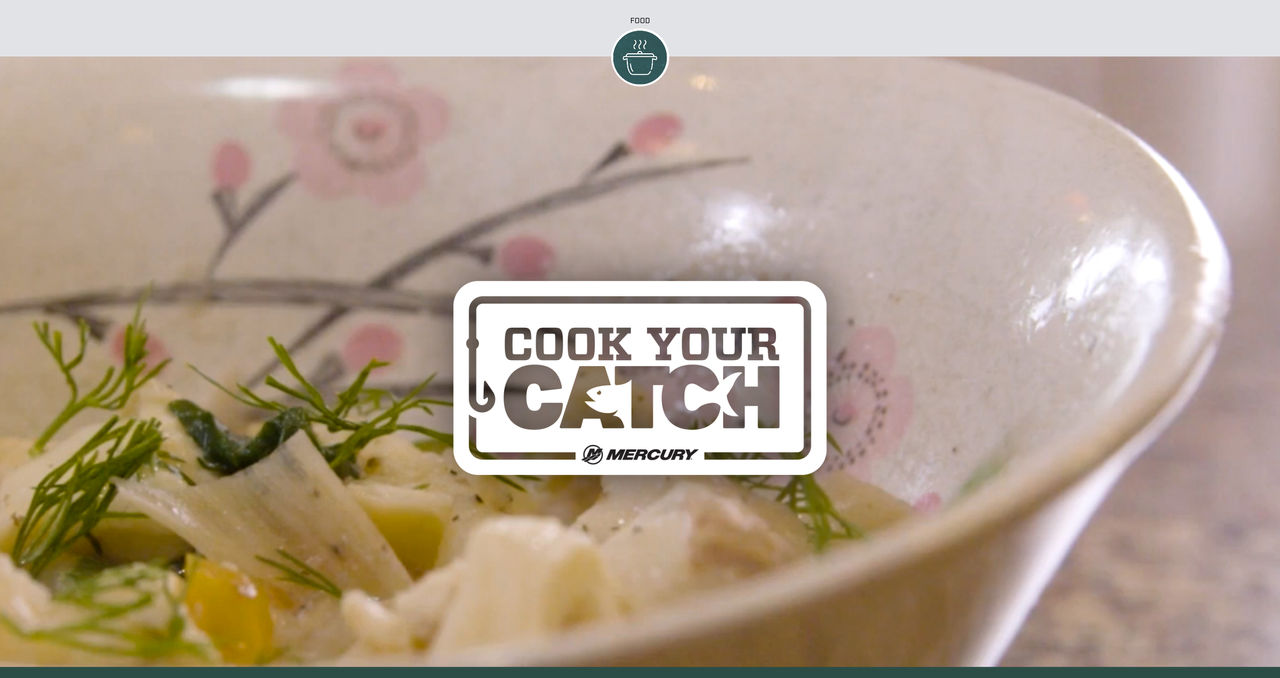Few things are as comforting as a hot bowl of chowder on a cold winter day, and while clam chowder has easily become one of the more popular of chowders, fish-based varieties have been a staple among seafarers and landlubbers alike for hundreds of years.
For this recipe, Pat Kehoe, director of international partnerships at Ducks Unlimited Canada, a non-profit organization committed to the conservation of Canada’s wetlands and associated waterfowl habitats, demonstrates how he prepares a simple, yet delicious, pike chowder with cattail roots and wild leeks.
It’s a recipe that celebrates ingredients found in many a backyard, paired in ways that both honor tradition and challenge culinary convention.
Note: When foraging for wild edibles, make sure you gather only what you are able to identify with 100% certainty. If you aren’t able to find cattail roots or they’re out of season, you can substitute with celery. And if wild leeks (ramps) can’t be acquired, use green onions instead.
Ingredients
- 1 1/2 to 2 pounds pike fillets, bones removed
- Pike tails (for making stock)
- 1 medium-sized yellow onion
- 2 bay leaves
- 2 sprigs fresh parsley
- 2 sprigs fresh thyme
- 4 black peppercorns
- 7 wild leeks (also known as ramps)
- 3 large Yukon Gold potatoes
- 1 cup diced carrots
- 1 cup diced cattail roots
- 1 cup diced celery
- 2 tablespoons chopped fresh dill
- 2 cups half-and-half cream
- Salt, to taste
- Pepper, to taste
Preparation
The best fish chowders begin with good fish stock. Fortunately, making fish stock is quick and easy, and it all starts with the tails. But because this recipe also calls for de-boned pike fillets, you’ll also need to prepare the fish accordingly.
Once you have removed the tails and prepared your fillets, be sure to rinse everything in cold water. Then, cut your fillets in 2-inch pieces and set aside in a bowl.
Getting back to your stock, place your clean pike tails in a large stockpot along with 10 cups of water, yellow onion, one wild leek with the greens (cleaned and chopped with roots removed), bay leaves, parsley, thyme and peppercorns.
Bring the stock to a boil over high heat, then reduce to a simmer and cook for 20-30 minutes, removing any foam that rises to the surface using a fine-mesh strainer lined with cheesecloth. Discard the solids. Once completed, set the stock aside.
Now that your fish stock is done, it’s time to prepare the other ingredients. After cleaning the wild leeks and removing the roots, chop them up, including the greens. Wild leeks, also known as ramps, taste like a cross between garlic and green onion.
Next, peel the potatoes and chop them into 3/4-inch cubes, and place them into the pot. Do the same with the carrots, adding them to the pot after you’ve cleaned, peeled and diced them. Chop up the cattail roots and celery, adding them to the pot next. When chopping up the cattail roots, be mindful that the tops can be quite fibrous, so discard if you’d like.
With most of your ingredients in the pot, place it back on the stove over medium-high heat, bringing your chowder back up to a nice simmer. Add one tablespoon of dill, saving the remainder to sprinkle on top of the individual bowls just before serving. Add your pike and cream, giving everything a nice stir. Add salt and pepper to taste, and allow your chowder to cook another five minutes.
You can serve right away, or you can turn down the heat to the lowest setting, cover and allow the flavors to meld for another 30 minutes. If you like, you can pair your chowder with a nice loaf of warm sourdough bread.
Ring the dinner bell, gather the troops and enjoy!
You can learn about the great work Ducks Unlimited Canada is doing to help preserve Canada’s wetlands by visiting them online today.
For more great recipes by some of the world’s foremost anglers and outdoor enthusiasts, search “Cook Your Catch” in the Mercury Dockline Blog.




